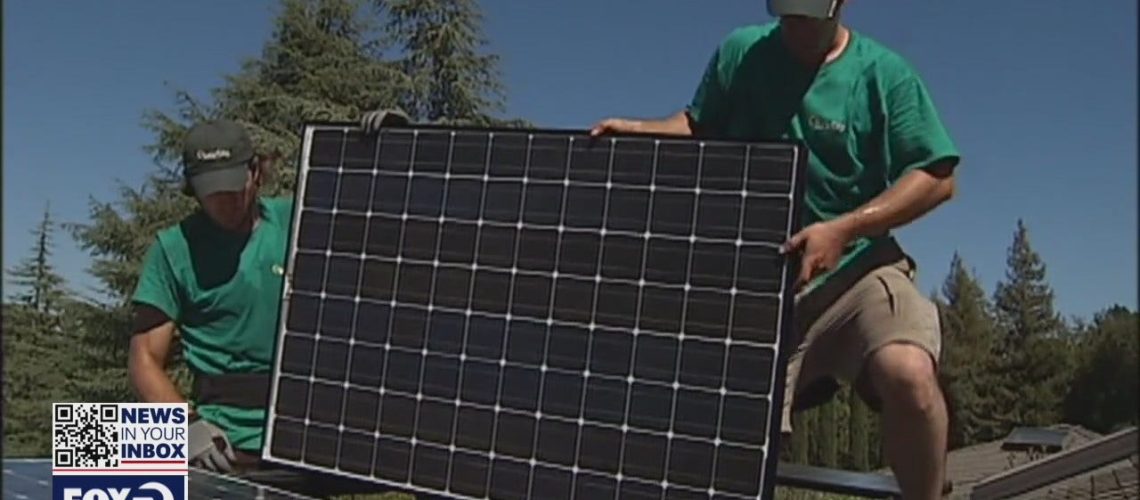Perpetual threats of flex alerts causing more people to go solar
The Bay Area was spared on Wednesday as the latest flex alert expired. But the constant threat of power outages and rate hikes has customers concerned. KTVU’s Jana Katsuyama says solar panel installers are seeing an uptick in business.
OAKLAND, Calif. – Power customers who are facing growing concerns over losing power are prompting a renewed interest in adding renewable energy to residential rooftops.
Californians have faced multiple flex alerts from Cal ISO this year which has warned that heat waves could lead to blackouts if demand overwhelms supplies. Wildfire danger has also led to concerns about PG&E planned outages to prevent sparks.
Rate hikes and the prospect of losing power led Peg O’Malley to decide to install solar panels on her Martinez home.
“It’s almost completely installed. It gets turned on next week and we’re really excited,” said O’Malley, “We have 30 panels because we didn’t want to kick in to PG&E and have any of their high rates hit us.”
“There’s more people going solar this year than like the last two years combined,” said Denis Grinyuk, a sales partner with V3 Electric in Vacaville. Grinyuk says they’re doing about 250 installations a month this year. He says they’re also seeing a 50% increase in people interested in pairing their solar system with a battery for storage.
“If you just have solar and the power gets shut off by PG&E you just get shut off. If you have a battery, depends on what battery you have, it’ll either power four breakers like your fridge, your lights, and stuff. Or it’ll power the whole house,” said Grinyuk.
Grinyuk says batteries might last only 12-14 hours, but they have one big benefit.
“The cool thing about it is it recharges when the sun comes back out so like even if PG&E was out for a whole month, and you have the battery, you’d still have power,” said Grinyuk.
California gets nearly 24% of its energy from solar power according to the Solar Energies Industry Association. Experts expect residential solar power installations to increase in the future along with pairing solar power with batteries to store power on-site.
“I think in general there’s more of interest in doing this at the house level. I also think it’s very important to think about how we can do it, sort of at the neighborhood level.” Sascha von Meier, an adjunct professor at the U.C. Berkeley Department of Electrical Engineering who also serves as Director of the California Institute for Energy and Environment.
“The new technology that’s really important is to have inverters that can manage the power quality and the micro-grid controllers that can manage the demand and supply,” said von Meier.
Von Meier says solar powered battery storage in neighborhoods could provide a more reliable source of power if there is a natural disaster, cyberattack, or other emergency.
“One really important policy development, I think, is to consider allowing multiple customers to form micro-grids together for emergencies, to be able to share that solar power or to share that battery resource across property lines because electrically we now have the ability with modern technology to do that safely,” said von Meier, “When there is a power outage, for whatever reason sort of on the large scale grid then there are small pockets of groups of customers that can still operate.”
Some solar power installers say while demand for batteries is rising, supplies were impacted by the pandemic and production slowdowns creating a backlog right now.
The costs of solar power systems can range from $10,000 to $100,000. Professor Von Meier says researchers are looking into future partnerships with PG&E to try pilot programs that could help low-income customers benefit from solar power.
Solar energy industry association



